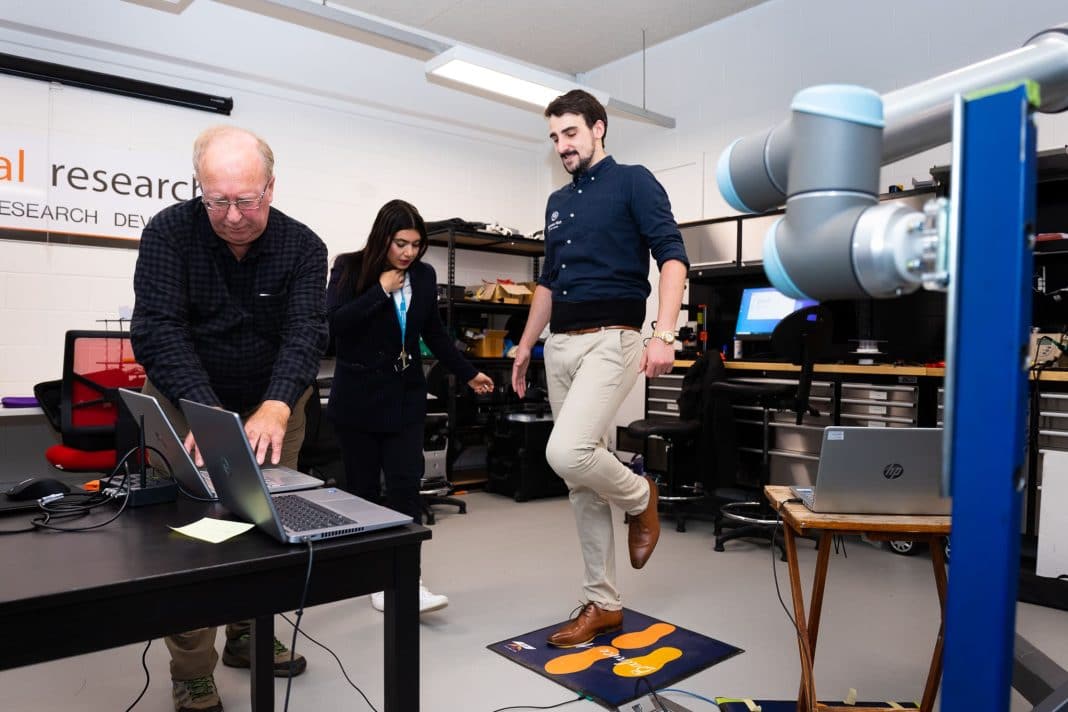University of Canberra researchers have teamed up with Canberra start-up technology developers, Balance Mat, to test their new technology that aims to make assessing fall risks in seniors more accurate and affordable.
UC Robotics researchers and Human Centred Technology (HCT) research centre staff are calibrating the Balance Mat, which measures stability to gauge the risk of falls in older people.
Lecturer and HCT Research Centre member, Dr Maryam Ghahramani, continues to run extensive tests on the balance mat using both human and robotic subjects.
“Gauging someone’s postural sway – and therefore how at risk they are of having a fall – is usually done visually by doctors,” said Dr Ghahramani.
“This is very subjective, and therefore not a good measure – it isn’t precise and can’t be used to tell if one’s balance is deteriorating or improving over time.”
She said that while there are currently devices that can be used to measure postural sway, they come with considerable drawbacks.
“Some are very expensive, or they only collect data and then that has to be analysed separately offline,” said Dr Ghahramani.
“The Balance Mat is the first technology I’ve seen that addresses these limitations, being small, light and therefore portable and just a fraction of the price of these others.”
Balance Mat managing director, Ian Bergman, initially built the technology for the security sector, but pivoted once he saw its potential usefulness in healthcare.
“I met David Hinwood, a PhD student from the Faculty of Science and Technology, at an exhibition, and we got to talking about testing the mat with UC’s robots – it’s been a really successful collaboration, and is looking to be a long-term one,” Mr Bergman said.
“The scope of possibility for its uses is also very wide – we are looking at how it can be applied to help people with Parkinson’s disease or diabetes, or stroke patients, to name a few,” he said.
To learn more visit balancemat.com.au



